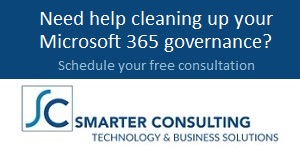Rethinking Workflows for an AI-Powered Team
When most people think about AI, they think about tools. Copilot, chatbots, models that can generate code or content. But the bigger story isn’t about the tools—it’s about how they change the flow of work. Workflows, not apps, are where the real transformation happens.
 For leaders, the challenge isn’t simply introducing AI into existing processes. It’s rethinking those processes altogether. If you add AI to a broken workflow, all you get is a faster broken workflow. The companies pulling ahead are the ones redesigning how tasks move between people and machines.
For leaders, the challenge isn’t simply introducing AI into existing processes. It’s rethinking those processes altogether. If you add AI to a broken workflow, all you get is a faster broken workflow. The companies pulling ahead are the ones redesigning how tasks move between people and machines.
Why Workflows Are the New Battleground
Every company has them: invisible maps of how work gets done. Approvals, handoffs, reports, meetings, emails. These workflows are often bloated, inefficient, and built for a world before AI. When you drop AI into them without redesign, you risk confusion, duplication, or mistrust.
Take the example of a global marketing team. Before AI, a campaign brief traveled from strategist to copywriter to designer to analyst. Each step took days. By rethinking the workflow, they now use AI to generate first drafts of briefs, summarize creative options, and even provide real-time performance predictions. Humans still make the final calls, but the overall cycle is 50% faster.
Human + AI: Dividing the Work
The core question leaders must ask is simple: What should AI do, and what should humans do?
- AI excels at: repetitive tasks, pattern recognition, data analysis, summarization, drafting.
- Humans excel at: judgment, creativity, strategy, empathy, storytelling.
Rethinking workflows means building a system where AI does the heavy lifting and humans focus on the high-value, uniquely human contributions.
Practical example: A law firm redesigned its contract review workflow. AI scans for standard clauses and flags risks. Lawyers step in only where judgment or negotiation is required. The result: reviews that once took a week are completed in hours.
Building Trust Into the Flow
Even the best workflow redesign fails if employees don’t trust the AI. Trust doesn’t come from telling people to “just use it.” It comes from:
- Transparency. Make it clear when AI is suggesting vs. deciding.
- Validation. Let humans review AI outputs, especially early on.
- Feedback loops. Encourage employees to flag errors and improve the system.
One healthcare provider introduced AI for patient intake notes. At first, nurses double-checked everything. Over time, as accuracy proved reliable, they shifted to spot-checking instead. Trust built gradually, and adoption stuck.
The Leader’s Role: Orchestrating the Flow
Rethinking workflows isn’t something managers can delegate. Leaders play a critical role in:
- Choosing which workflows to redesign first.
- Ensuring AI is aligned with business goals.
- Communicating why changes are happening.
- Coaching teams through the new way of working.
Think of it as conducting an orchestra: humans and AI are different instruments, and leaders set the tempo so the music works together.
How to Get Started
You don’t need a full redesign across the company on day one. Start with one high-impact workflow:
- Map the current process in detail.
- Identify which steps are repetitive or data-heavy (AI candidates).
- Identify which steps require human judgment.
- Rebuild the flow so humans and AI each do what they do best.
- Pilot it, gather feedback, and refine.
Within weeks, you’ll see results. More importantly, you’ll build a model for scaling to other parts of the business.
The Future of Work Is Flow
AI won’t transform your business just because it’s powerful. It will transform your business when you redesign workflows to take advantage of what it does best. Leaders who treat workflows as strategic assets—not invisible plumbing—will be the ones who unlock speed, creativity, and resilience.




